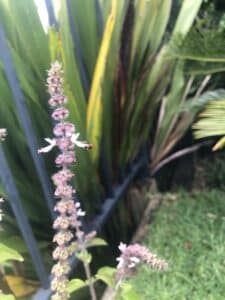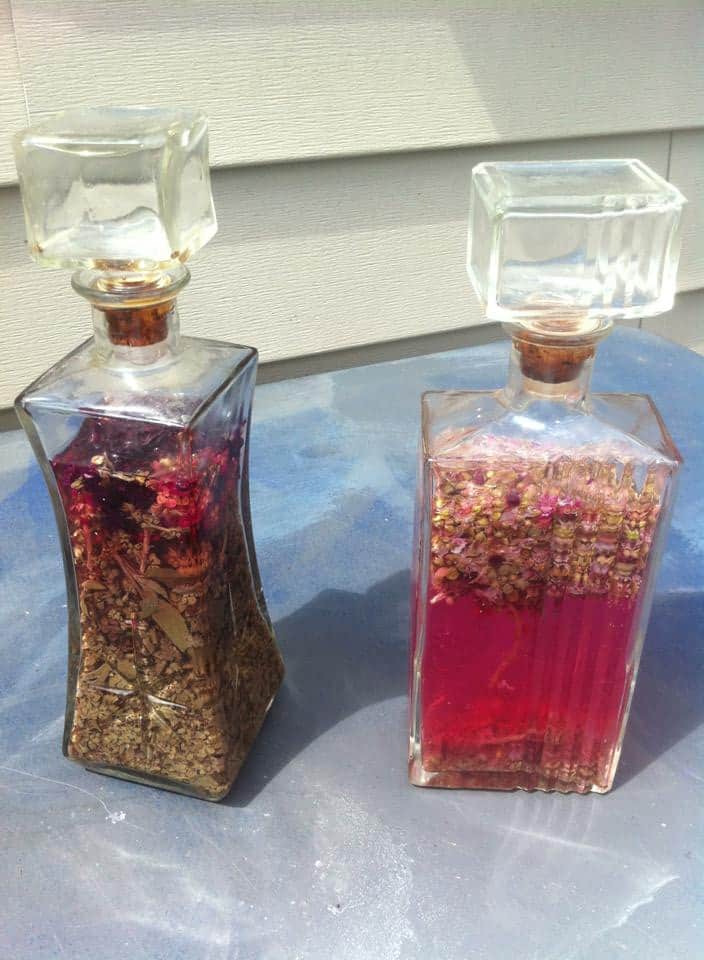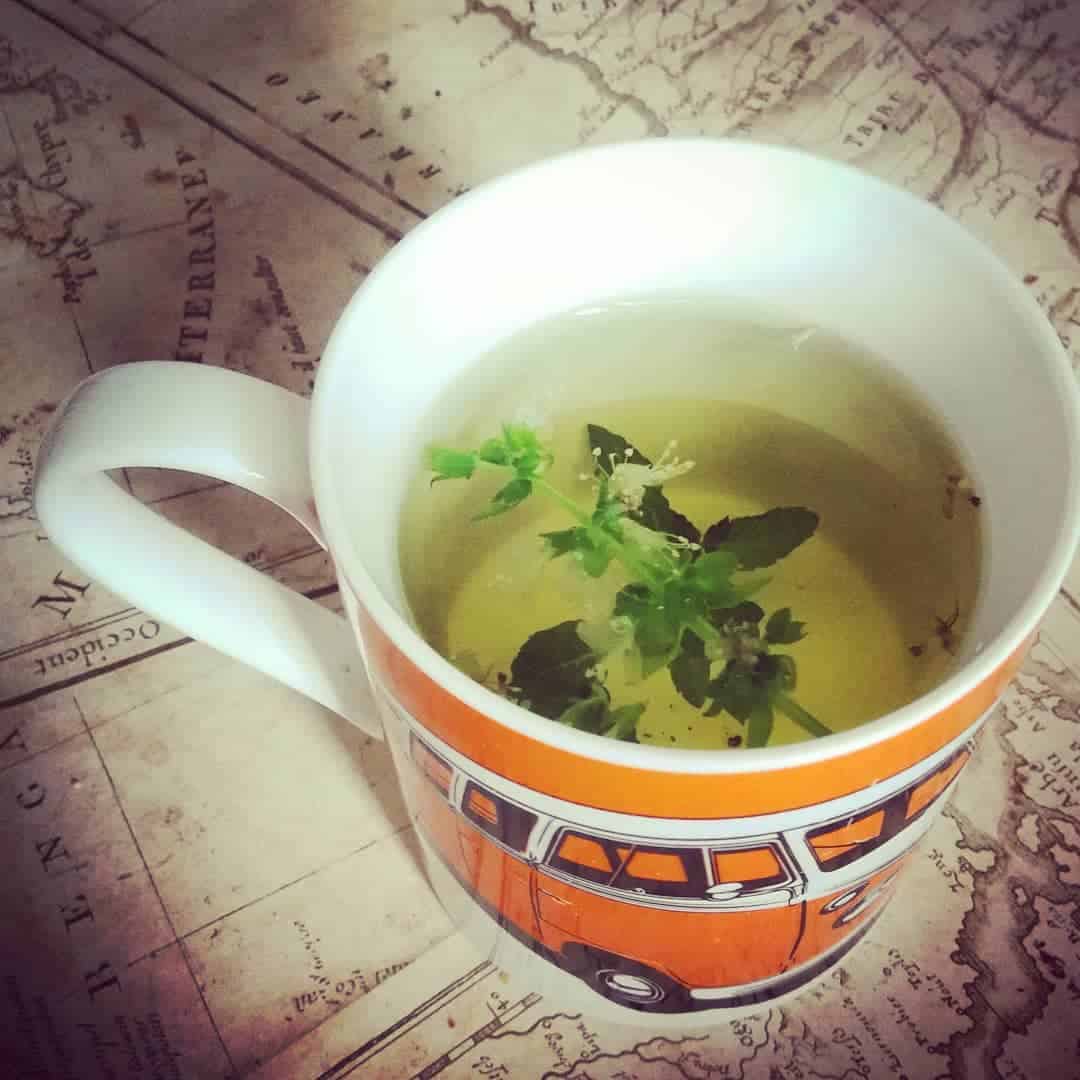Five years ago, when I was a novice at gardening, I was happy to see my Basil with purple flowers.
Later, I found out the paradox of Basil owning flowers.
Generally, Basil plant blooms to show that they are now at the end of their life cycle and ready to reproduce and produce seeds for planting in the next season. You can either keep flowers for seeds or remove them to preserve the smell and flavor.

Any normal gardener will not want their Basil to flower, as the plant is usually grown for the culinary herb it provides.
Are you facing the same dilemma? Do not worry; I did a thorough experiment, and I will tell you why and how to stop the flowering in this article.
Table of Contents Show
What Kind of Basil Has Purple Flowers?
Basil is a popular herb with varieties between 50 and 150, categorized into four types: sweet Basils, Basil with scented leaves, dwarf Basils, and purple-leaves Basils.
There are Basil varieties with white, pink, or purple blooms. Thai Basil is well-known for its purple flowers, while Sweet Basils have purple foliage.
There are other varieties with purple flowers.
| Basil Varieties | Features |
|---|---|
| Thai Sweet Basil | Small dark pointed leaves Spicy, licorice flavor |
| "Cinnamon" Basil | Narrow, slightly serrated and dark green, glossy leaves A flavor reminiscent of cinnamon & mint nuances |
| "Christmas" Basil | Cultivar of Thai and Genovese Basil, with large glossy leaves A fruity, mulled-wine flavor |
| "Genovese" Basil | Bright green, slightly crinkled leaves Sweet, slightly spicy flavor |
| Dark Opal Basil | Medium-sized purple leaves |
| "Purple Ruffles" Basil | Leaves with pliable with a dark purple and almost black hue Mix of anise, cinnamon, licorice favor |
The properties of Basil with different flower colors are almost the same and only differ in the shade they provide.
Why Do Basils Bloom?
Basils bloom as a part of their life cycle.
Basil is an annual herb that produces flowers to breed seeds for the next year.

If you do not prune the plant properly at the beginning of its flowering phase, it will eventually die after casting seeds.
Normally, the plant would focus on foliage growth. But, during the end of its lifetime, it will produce flowers, and its growth speed will slow down gradually.
Certain varieties like Pink perennial Basil, Greek columnar Basil, and White perennial Basil are perennials and won’t die after flowering.
During flower production, the Basil plant focuses its energy on flower development, and the foliage will take a hit.
You will not even have to throw away the flowers. You can normally consume them as the Basil flowers are edible.
After the Basil flowers, it goes low on energy and cannot withstand harsh temperatures in winter. So, it would be better to disallow the plant to bloom for your best interests.
What to Do With Basil Purple Flowers?
If you witness flowers in your Basil plant, you should instinctively remove them as soon as possible.
The flowers bring despair and damage to the Basil plant with them.
You can pinch the flowers off when the flowers are not prominent. However, if they have gone woody, cut those flowers off the plant.
The purple and white flowers on Basil can be kept in a vase and used as a decorative item to boost the aesthetics of your home.
Basil purple flowers offer other benefits too. Let us talk about its other benefits.
- You can use Basil flowers as a garnishing touch to salads, fruit platters, meat, etc.
- People usually make pesto with Basil leaves. But adding Basil flowers to it is not a bad option.
- Basil plant possesses a lot of medicinal properties. Basil flower essence is a very good antibacterial and energizing product.
- You can also make a potpourri and add Basil flowers to it to boost the fragrance of your room.
If you wish to leverage both the leaves and flowers, you need to grow a series of Basils, all at different growing phases, having a 1 to 2 weeks gap.
Apart from the medicinal benefits, you can also leverage the benefits of Basil flowers by integrating them into different cuisines.
Let us look at a few recipes you can add Basil flowers.
1. Basil Flower Vinegar
- Pick some Basil flowers and rinse them properly. Dry the blossoms before the next step.
- Place the Basil flower strands in a transparent jar and add wine vinegar to cover it.
- Add some more flower strands along with wine vinegar and fill the jar.

- After about three weeks, remove the flowers by straining the vinegar in another container.
- Wash the jar and refill it with the pale-colored vinegar.
2. Olive-Basil Flower Oil
- Pick and rinse the Basil flowers and let them dry out completely.
- Put some of them in a clean, transparent jar and fill it with olive oil to completely submerge the flowers.
- Close the filled jar tightly and keep it in a cool, dry, dark place for about a month and a half.
- Strain the oil into another container and enjoy it as you like.
3. Basil Flower Tea
- Take an empty cup or a pot and place some Basil flower strands on it.
- Fill the pot or cup with hot boiling water.

- Let the salt and Basil flower mixture steep for about 5 minutes, and strain it using a tea strainer.
- You can also prepare a good amount and refrigerate it to use later.
4. Salt with Basil Flavor
- Take the Basil flowers and chop them into small pieces. You can also make Basil flower powder or paste using a grinder.
- Put some salt and the powder in a food processor and mix them well for about 10 seconds.
- Let the salt and basil flower mixture dry in the oven for about 25 minutes.
- After removing the oven, give it a last whirl in the food processor.
There are other recipes like Basil flower essence, and Basil infused water which is pretty easy to prepare.
How to Stop Basil from Flowering?
So why would you want to stop your Basil from flowering? I have talked about its slow growth in the above section.
But once flowered, the leaves of Basil will lose the smell.
Flowered Basils become less flavorful and aromatic and develop stems turning a bit woody due to the energy shift from leaf to flower development.
However, you can still eat the Basil leaves even after they have flowered.

So, it is much better not to let your Basil flower. There is no secret to hindering that process so follow the tips below.
- Prune your Basil plant every week or two to let it know it is not ready to flower. You can learn it when the plant attains a height of 8 inches.
- Repot your Basil plant as soon as you witness it outgrowing the pot.
- If you witness new flower buds appear, pinch them as soon as possible.
However, if you want to chase the annual root of Basil, let the plant flower and collect the seeds. Next year, it will help you plant and grow fresh Basil.
Conclusion
Basil plant is loaded with medicinal and culinary benefits, and keeping or removing flowers is merely a subjective decision.
If you let the herb plant own flowers, you will have propagating seeds for the following year, while cutting off the flowers allows you to enjoy the constant aroma and flavor of the plant.
Do you want insights on other purple plants? Read our articles on Purple Tomato Varieties and Purple Plants for Indoors.
Happy Gardening!


